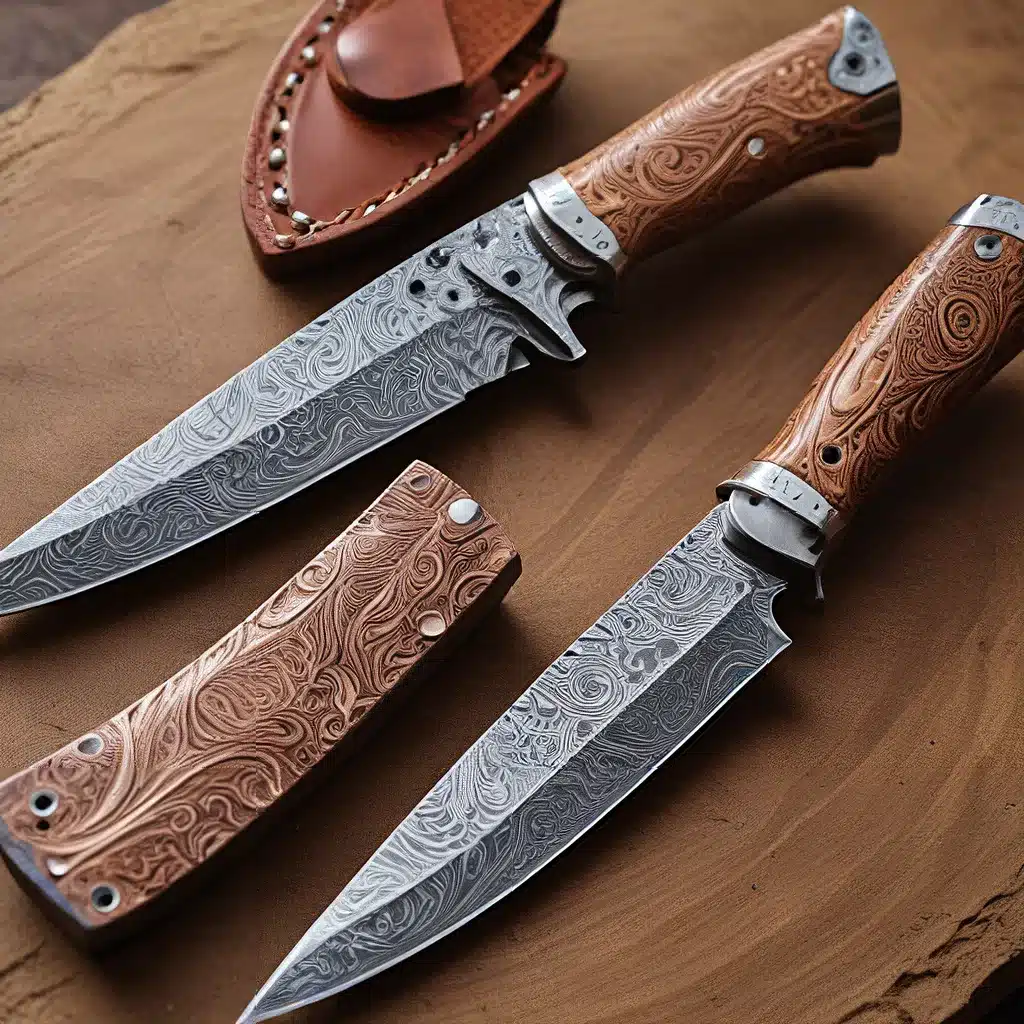
The Allure of Damascus Steel
As I hold this Damascus knife in my hand, I can’t help but be mesmerized by its captivating patterns. The intricate swirls and waves of steel dance across the blade, each one a unique work of art. These knives are more than just tools; they are living, breathing testaments to the enduring craft of knifemaking.
The history of Damascus steel is shrouded in mystery and legend, stretching back centuries to the Middle East and South Asia. These blades were once prized by warriors for their legendary sharpness and ability to cut through other swords. But the exact methods used to create this legendary steel were lost to time, adding to its mystique.
Today, modern knifemakers have revived the art form, using advanced techniques and materials to recreate the signature patterns and strength of Damascus steel. These contemporary interpretations of the classic blades pay homage to the past while embracing innovation, making them accessible to a wider audience of knife enthusiasts.
The Art of Damascus Knife-Making
Crafting a Damascus knife is no easy feat. It’s a labor-intensive and highly skilled process that requires precise temperature control and meticulous hammering. Bladesmiths carefully layer and forge different types of steel, creating the desired pattern through a technique known as pattern welding.
This intricate process involves stacking and folding multiple layers of high-carbon and low-carbon steel, then forging them together to create the mesmerizing ripple effect. Each knife is a unique masterpiece, with no two blades ever being exactly the same.
But the magic of Damascus knives doesn’t stop at their captivating appearance. These blades are also renowned for their exceptional strength, sharpness, and durability. The layering and folding process not only enhances the aesthetics but also contributes to the knife’s overall performance.
Collectible Masterpieces
For many, Damascus knives are more than just functional tools; they are prized collectibles and works of art. These knives have become a source of fascination for enthusiasts around the world, who seek out rare and limited-edition pieces to add to their collections.
Custom knife makers often create unique designs with intricate details and carefully chosen handle materials, elevating the knife from a mere cutting tool to a coveted collectors’ item. These knives are not just displayed with pride but are also seen as valuable investments, appreciated for their historical significance and artistic merit.
But the allure of Damascus knives goes beyond their collectability. They are also highly sought after by outdoor enthusiasts, chefs, and anyone who appreciates the beauty of a well-crafted blade. Whether you’re using it for culinary adventures or outdoor explorations, a Damascus knife can be a reliable and versatile companion, blending form and function effortlessly.
Maintaining the Timeless Elegance
Owning a Damascus knife requires a bit of special care and attention to maintain its timeless elegance. The intricate patterns on the blade can be particularly sensitive, and proper cleaning and maintenance are essential for preserving the knife’s aesthetic appeal.
Experts recommend using a soft cloth and mild soap and water to clean the blade, avoiding harsh abrasives that could damage the delicate patterns. It’s also important to regularly oil the blade to prevent corrosion and ensure a smooth, easy-to-use edge.
The handles of Damascus knives often feature a variety of materials, including wood, bone, and other natural substances. Caring for these handles requires a touch of finesse as well, with regular conditioning and maintenance to keep them looking their best.
The Timeless Allure of Damascus Knives
As I reflect on the history and craftsmanship behind these Damascus knives, I’m struck by the timeless allure they hold. These blades are not just tools; they are living, breathing works of art that embody the spirit of human ingenuity and creativity.
Whether you’re a seasoned collector, an outdoor enthusiast, or simply someone who appreciates the beauty of a well-crafted blade, Damascus knives have the power to captivate and inspire. They are a testament to the enduring legacy of knifemaking, a reminder that even in our modern age, there is still room for the timeless art of forging steel.
As I carefully place my Damascus knife back in its sheath, I can’t help but feel a sense of wonder and reverence. This blade is more than just a cutting tool; it’s a masterpiece, a living embodiment of the human spirit and the enduring power of craftsmanship. And for that, I am truly grateful.


